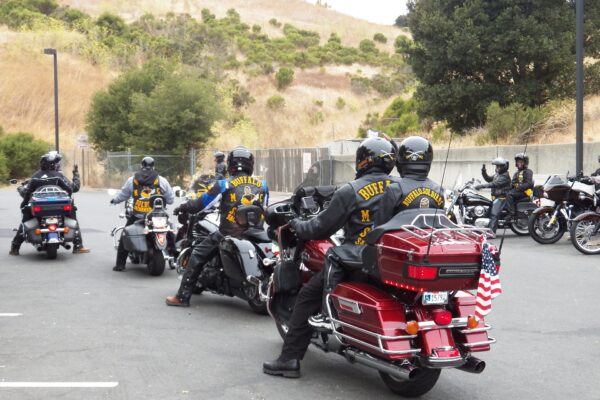Group Motorcycle Rides: Safety and Planning
Group motorcycle rides can be an enjoyable experience but require adequate planning and organization to ensure the safety of all participants. The Motorcycle Safety Foundation recommends the following tips for a successful group ride:
- Hold a pre-ride meeting to discuss the route, stops, riding formation, and the plan if someone gets separated from the group.
- Assess each rider’s skill level and form riding groups accordingly.
- Ensure everyone fuels up before the ride to coordinate group stops.
- Assign a “lead” rider to set the pace and communicate with the group.
- Select a “sweeper” rider to keep an eye on all riders in front and react if needed.
- Review hand signals for communication during the ride.
- Create a staggered riding formation to allow each bike room to slow down, stop, or maneuver around obstacles.
- Avoid riding side-by-side in the same lane.
- Maintain a safe speed and avoid tailgating or passing other riders.
- Always wear appropriate safety gear, including protective clothing and eyewear.
- Carry a first-aid kit, tool kit, and cell phone for emergencies.
The Importance of Proper Gear and Maintenance
Wearing the right gear and maintaining your motorcycle are essential aspects of ensuring rider safety. Protective clothing, helmets, and eyewear can significantly reduce the risk of severe injuries in the event of an accident.
Protective Gear
- Helmet: A properly fitted helmet is the most crucial piece of safety gear for motorcyclists. It should meet the Department of Transportation (DOT) standards and fit snugly without obstructing the rider’s vision or hearing.
- Protective clothing: High-quality jackets, pants, gloves, and boots designed for motorcycling can provide additional protection against abrasions, cuts, and impact injuries.
- Eyewear: Proper eyewear, such as goggles or a helmet visor, protects the rider’s eyes from dust, debris, and wind.
Motorcycle Maintenance
Routine maintenance is crucial for ensuring the safety and reliability of your motorcycle. Some essential maintenance tasks include:
- Checking and adjusting tire pressure and tread depth.
- Inspecting and adjusting the chain, belt, or shaft drive.
- Checking and changing engine oil and filter.
- Inspecting brake pads and discs for wear and proper functioning.
- Examining and replacing air and fuel filters as needed.
- Ensuring all lights and signals are working correctly.
In our final article, we will discuss Legal Aspects of Motorcycle Accidents.
Injured in a motorcycle accident? Don’t hesitate to get started on your case by calling Wood Craig Miller, LLC at , or contact us online to schedule a free consultation. We’re knowledgeable on federal and state traffic laws and have helped countless injured drivers and passengers in our community.




